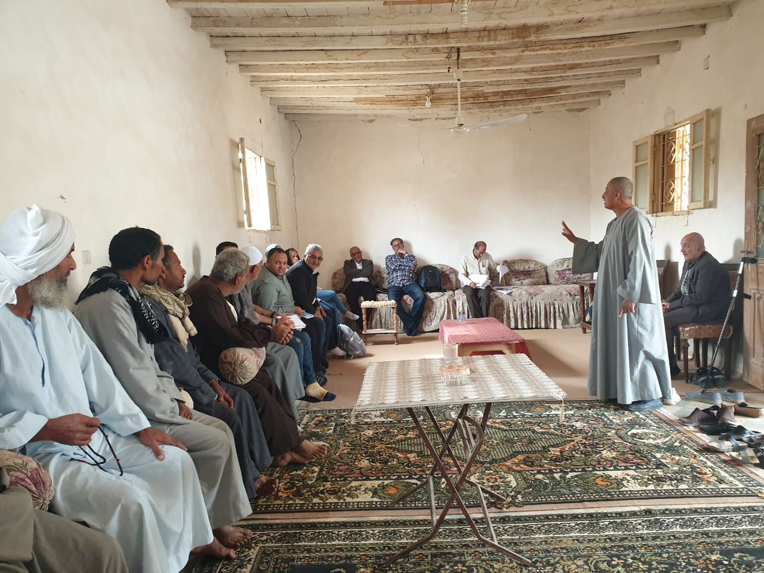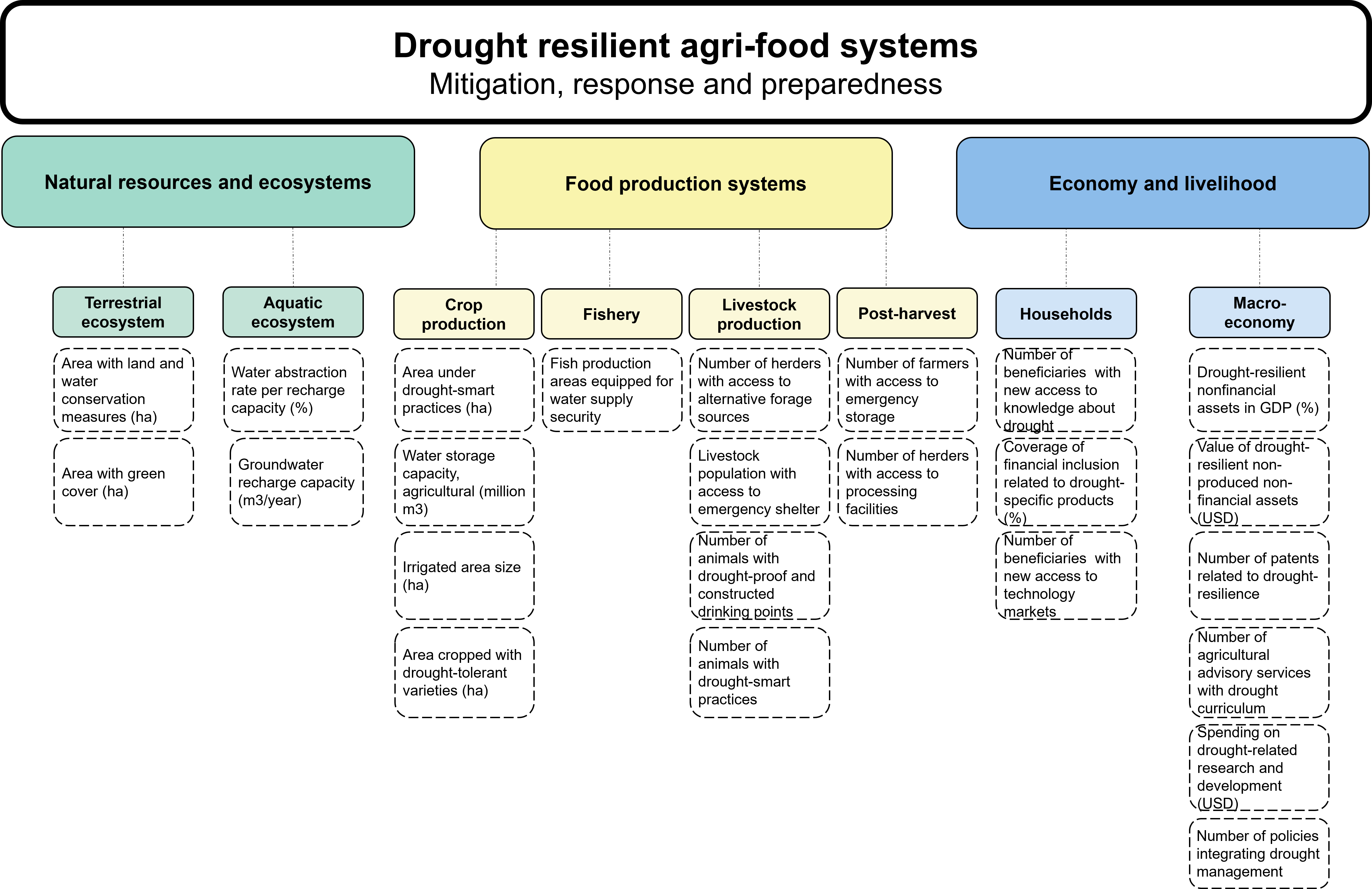Policy to action
 The increasing frequency and severity of drought events underscore the urgency to translate drought policies and strategies into actions on the ground. Actions must take advantage of the progress generated by the global drought community, in terms of knowledge and practices. Moving policies into actions is an intricate process, whereas the diversity of drought measures calls for a careful and integrated approach. The implementation requires four enabling pillars to eliminate the systematic barriers: defining institutional responsibilities, establishing coordination mechanism, capacity-development, and partnership.
The increasing frequency and severity of drought events underscore the urgency to translate drought policies and strategies into actions on the ground. Actions must take advantage of the progress generated by the global drought community, in terms of knowledge and practices. Moving policies into actions is an intricate process, whereas the diversity of drought measures calls for a careful and integrated approach. The implementation requires four enabling pillars to eliminate the systematic barriers: defining institutional responsibilities, establishing coordination mechanism, capacity-development, and partnership.
A responsible institution must be defined and mandated to take lead. In those cases where no authority or institution is identified as lead, responsibilities might spread thin. Consequently, roles and tasks of concerned authorities and sectors become blurred easily. Dedicated resources must be assigned to the lead institution to enable rapid and effective actions.
An institutional coordination mechanism must be lined out, whereas the multiple components, sectors and stakeholders are equally considered.
The prevailing silo-like approaches have been, so far, limiting the capacities to deploy integrated solutions, thus responding only to sectoral needs, not to mention the risk of duplicating efforts. Furthermore, the lack of institutional coordination hampers the opportunity to act based on the assessed risks, as they tend to intervene once the emergency has occurred. At the heart of the coordination, communication protocols are required to institutionalize the information-sharing amongst relevant institutions through, for example, digital platforms.

National capacities across sectors and stakeholder levels require more investment. The wealth of global knowledge is significant and readily available for countries to put in place the identified measures, practices, and tools. It is of paramount importance to design and enact capacity development programs to strengthen human capital from decision-makers to field actors and to ensure solutions are taken at scale. To this scope, the academia and the development community must work hand-in-hand to translate the scientific progress into the development curriculum.
Partnerships to connect horizontal and vertical stakeholders must be strengthened. While the development of horizontal partnership is steady, and the community of practice is expanding, increasing the inclusivity of partnership is equally important. There is a need to introduce participatory approaches more and involve communities into the decision-making process. Intermediaries who are versed in local dynamics need to be invested of this role, acting as bridges between communities and institutions to leverage on global knowledge in the interest of livelihoods.
Taking policies into action requires an overarching results framework to follow up on the progress. Integrated drought management has no unified metrics due to the widely varying mitigation measures of the distinct contexts. It is more of a question of how individual cases should be organized to create globally applicable and standardized results indicators. A practical approach is to measure the progress and achievements along the three pillars of integrated drought management. Broadly defined indicators that measure resilience-building can be used to monitor the status of the implementation of policies. FAO defined an inclusive list of quantified indicators as per the pillars of integrated drought management to monitor the progress towards drought-resilient systems. The list draws on multiple global stocktakings of drought mitigation measures.
The indicators are grouped under three categories:
- natural resources and ecosystems;
- food production systems; and
- economy and livelihood.
The access to monitoring and early warning systems is not only a pre-condition but a result of the implementation of integrated drought management.
The global target “G” of the Sendai Framework for Disaster Risk Reduction underscores the importance to “substantially increase the availability of and access to multi-hazard early warning systems and disaster risk information and assessments to people by 2030”. The development of monitoring and early warning systems has two directions: information about natural resources and increased capacities. While the first generates information about the status of ecosystems, the second supports stakeholders to improve preparedness.

Vulnerability and impact assessments can serve as a basis for the development of context-specific indicators, and assessments can support the delineation of the boundaries of vulnerable areas, sectors and stakeholder groups.
Vulnerability and impact assessments can be integrated into the development of results frameworks in two different ways. The first approach is to use the results of assessments to define contextualized indicators, based on the identified vulnerabilities. Assessments can guide and direct the actions to the areas most in need, which provides a baseline for the implementation of integrated drought management. The other, global approach is built on the first approach by defining catchall indicators for vulnerabilities and impacts. The progress on these indicators can be measured against the results of the assessments.

Measures of mitigation, preparedness, and response are widely varying amongst systems and actors. The quantification of the progress requires a more diverse set of indicators to accommodate all types of measures, without losing information or excluding any.
Measures of mitigation, preparedness and response are diverse and context-specific, which does not enable the standardization of indicators. The core challenge is the definition of indicators amongst sectors that demand substantially different measures. There are also sizable measures, which cannot be categorized together with others due to their scales. Nevertheless, the majority of mitigation measures belong to a handful of aggregate categories that are suitable to indicate the progress within systems and across sectors.

The results framework of drought resilience-building measures the impact of interventions on environment, societies and economies. Resilience-building is a dynamic and continuous process that must prove effective and profitable to catalyse resources.
The indicators of the results framework can be selected and combined to fit different contexts. An important aspect of drought resilience-building is to make the progress financial sustainable. Indicators measuring the progress on the resilience of the environment, societies and economies must be complemented with financial indicators. Financial indicators can help understand the potential of interventions to catalyse resources and maintain a reasonable finance flow for drought-resilience.

